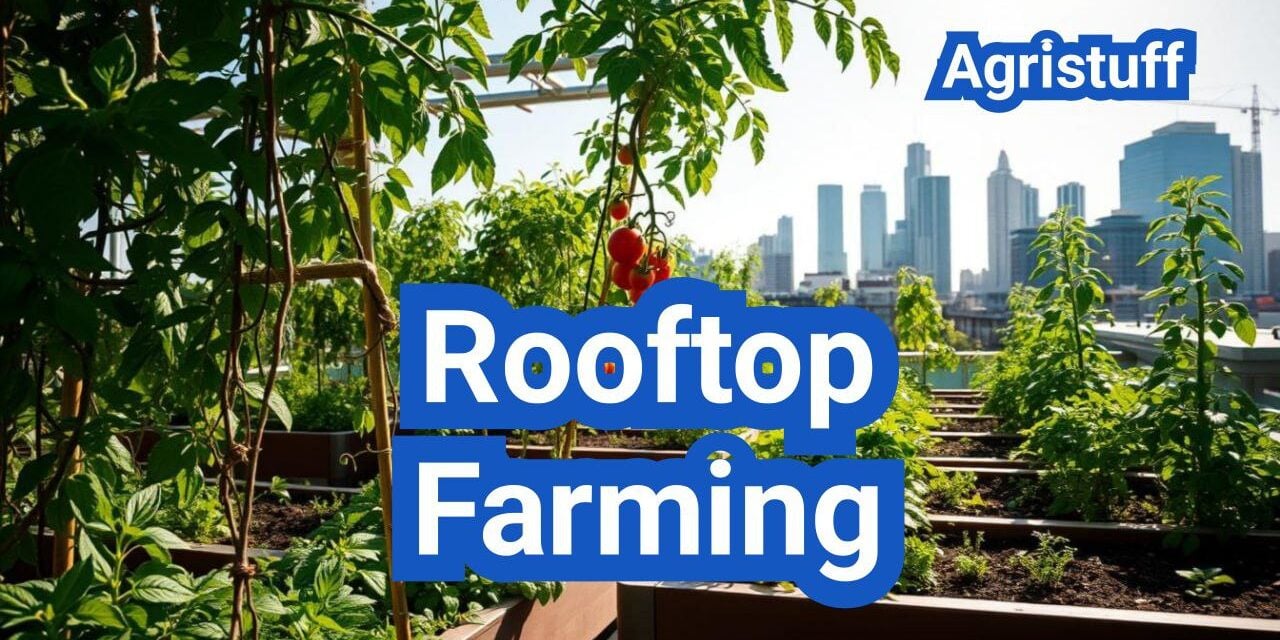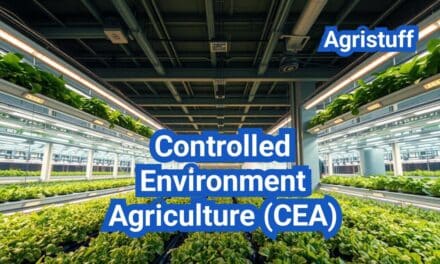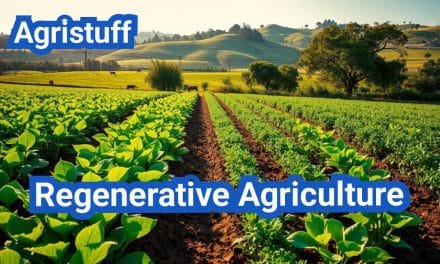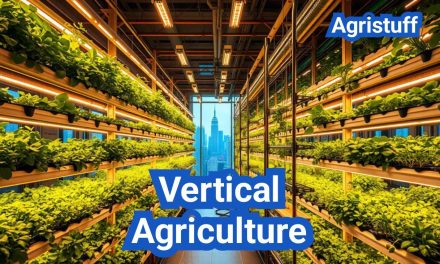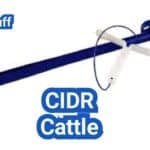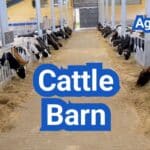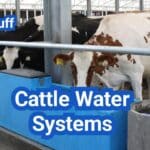As urbanization continues to encroach upon arable land, cities are turning to innovative solutions to ensure food security. One such solution gaining traction is rooftop farming, transforming underutilized rooftops into productive agricultural spaces.
Many cities are at the forefront of this movement, adopting green roof agriculture to mitigate the effects of urbanization. By doing so, they not only enhance food security but also contribute to urban heat island mitigation and foster community engagement through shared green spaces.
The benefits of such initiatives are multifaceted, including environmental advantages and the potential for rooftop greenhouses that can extend the growing season. As the world becomes increasingly urbanized, the importance of integrating agriculture into city landscapes grows.
Key Takeaways
- Urbanization drives the need for innovative food security solutions.
- Rooftop farming enhances food security and mitigates urban heat islands.
- Green roof agriculture fosters community engagement and environmental benefits.
- Rooftop greenhouses can extend the growing season.
- Integrating agriculture into urban landscapes is crucial for sustainability.
What Is Rooftop Farming and Why It Matters
Rooftop farming represents a groundbreaking solution to urban food security challenges. By transforming unused rooftop spaces into productive agricultural hubs, rooftop farming companies are revolutionizing the way cities grow, source, and consume food.
Definition and Growing Popularity in Urban Areas
Rooftop farming, also known as rooftop agriculture, is the practice of growing plants and crops on rooftops. This method of farming is gaining popularity in urban areas due to its potential to increase food production, reduce transportation costs, and provide fresh produce to city dwellers.
The growing popularity of rooftop farming can be attributed to its numerous benefits, including improved air quality, reduced urban heat island effect, and enhanced biodiversity. As cities continue to expand, rooftop farming offers a sustainable solution to urban food security challenges.
Historical Development of Agriculture on Roooftops
The concept of rooftop farming is not new. Historical records show that ancient civilizations, such as the Babylonians and the Aztecs, practiced forms of rooftop agriculture. However, modern rooftop farming has evolved significantly, incorporating advanced technologies and sustainable practices.
In recent years, rooftop farming has gained momentum globally, with cities like New York, Chicago, and Los Angeles adopting this innovative approach to urban agriculture.
Current State of Rooftop Farming in the USA
The current state of rooftop farming in the USA is characterized by a growing number of commercial and community-based projects. Cities are recognizing the benefits of rooftop farming, and many are implementing policies to support its development.
| City | Number of Rooftop Farms | Primary Crops |
|---|---|---|
| New York City | 20+ | Leafy greens, herbs, strawberries |
| Los Angeles | 15+ | Tomatoes, peppers, cucumbers |
| Chicago | 10+ | Vegetables, fruits, flowers |
Rooftop farming is becoming an integral part of urban agriculture in the USA, offering a sustainable and innovative solution to food production challenges.
The Multiple Benefits of Rooftop Farming

By leveraging rooftop spaces for farming, cities can experience significant environmental and social improvements. Rooftop farming is not just about growing crops; it’s about creating sustainable urban ecosystems.
Rooftop farms enhance urban landscapes with myriad benefits for cities and their ecosystems. They improve air quality, reduce urban heat island effects, and manage stormwater runoff.
Environmental Advantages
Rooftop farming offers several environmental benefits. One of the key advantages is the reduction of the urban heat island effect. By covering rooftops with vegetation, cities can lower their ambient temperatures, reducing the need for air conditioning and improving air quality.
Stormwater Management is another significant environmental benefit. Rooftop farms can absorb rainwater, reducing the burden on urban drainage systems and minimizing the risk of flooding.
| Environmental Benefit | Description | Impact |
|---|---|---|
| Urban Heat Island Mitigation | Reduction of urban temperatures through vegetation | Lower energy consumption |
| Stormwater Management | Absorption of rainwater by rooftop farms | Reduced risk of flooding |
| Air Quality Improvement | Vegetation absorbs pollutants and CO2 | Healthier urban environment |
Economic Benefits
Rooftop farming also provides economic benefits, including the creation of green jobs and the potential for increased property values. By transforming underutilized rooftops into productive spaces, cities can stimulate local economies.
The sale of produce from rooftop farms can generate additional income for farmers and contribute to the local food economy.
Social and Community Impact
Beyond environmental and economic benefits, rooftop farming has a significant social impact. It can foster community engagement and provide educational opportunities for urban residents.
Rooftop farms often serve as community hubs, promoting social cohesion and a sense of community among participants.
Assessing Your Roof’s Potential for Farming
To determine if your roof is suitable for farming, a comprehensive evaluation of its load-bearing capacity, sunlight exposure, and accessibility is necessary. This assessment is crucial for ensuring the structural integrity and sustainability of your rooftop farm.
Structural Load-Bearing Capacity Evaluation
The first step in assessing your roof’s potential is to evaluate its structural load-bearing capacity. This involves determining whether the roof can support the weight of soil, plants, irrigation systems, and potentially, people. A structural engineer should be consulted to assess the roof’s condition and provide recommendations for any necessary reinforcements.
Key factors to consider include:
- The type of roofing material and its condition
- The design and construction of the building
- Any existing loads on the roof, such as HVAC units
Sunlight Exposure and Microclimate Analysis
Sunlight exposure is a critical factor in rooftop farming, as it directly affects plant growth and productivity. Conducting a sunlight analysis will help determine the amount of direct sunlight your roof receives throughout the day and year. Additionally, understanding the microclimate, including wind patterns, temperature fluctuations, and potential shading from nearby structures, is essential for selecting appropriate crops and designing the farm layout.
Access, Safety, and Logistical Considerations
Ensuring safe and efficient access to the rooftop farm is vital for its success. This includes installing secure ladders or stairways, implementing safety measures such as guardrails, and planning for the transportation of materials and produce. Logistical considerations, such as storage for tools and supplies, access to water, and proximity to markets, should also be evaluated.
By carefully assessing these factors, you can determine your roof’s potential for farming and lay the groundwork for a thriving rooftop agricultural project.
Types of Rooftop Farming Systems
Urban agriculture has seen a rise in diverse rooftop farming systems, each with its unique benefits. These systems have evolved to maximize space efficiency, reduce water consumption, and increase crop yields. The choice of system depends on factors such as the structural integrity of the building, available space, and the desired outcome of the farming activity.
Intensive vs. Extensive Green Roof Systems
Green roof systems are categorized into intensive and extensive types based on their depth, maintenance requirements, and the type of vegetation they support. Intensive green roofs are deeper, typically ranging from 6 to 24 inches, allowing for a wider variety of plants, including shrubs and trees. They require more maintenance and irrigation due to the deeper soil.
Extensive green roofs, on the other hand, have shallower soil depths, usually between 2 to 6 inches, and are designed to be low maintenance. They are suitable for sedum and other hardy, drought-resistant plants. Extensive roofs are lighter and less expensive to install but offer less diversity in planting options.
Container Gardening for Flexible Layouts
Container gardening is a versatile and popular method for rooftop farming. It involves growing plants in pots or containers, which can be arranged to maximize space and accommodate different types of crops. This system is particularly useful for rooftops with structural limitations or for those who prefer a more manageable and flexible layout.
The use of containers allows for better soil control, improved drainage, and the ability to move plants to optimize sunlight exposure or protect them from extreme weather conditions. Container gardening can be used for a wide range of crops, from leafy greens to fruiting plants.
Rooftop Greenhouse Installations
Rooftop greenhouses offer a more controlled environment for farming, providing protection from harsh weather conditions and extending the growing season. These structures can be fully or partially enclosed and are equipped with climate control systems, shading, and irrigation technologies.
The advantages of rooftop greenhouses include improved crop yields, year-round production capabilities, and the ability to grow a wider variety of crops. However, they require significant investment in infrastructure and energy for heating and cooling.
Essential Infrastructure for Successful Rooftop Farming

Establishing a thriving rooftop farm requires careful planning and investment in the right infrastructure. Proper infrastructure is critical to preventing leaks, ensuring the longevity of the rooftop farm, and maintaining its productivity.
Root Barriers and Waterproofing Solutions
One of the most critical components of rooftop farming infrastructure is the implementation of effective root barriers and waterproofing solutions. Roots from plants can penetrate and damage roofing membranes, leading to costly repairs. A green roof root barrier prevents this by creating a layer between the soil and the roof membrane. Waterproofing solutions, such as applying a waterproof membrane, further protect the roof from water damage.
When selecting a root barrier, it’s essential to choose a material that is durable and resistant to root penetration. Similarly, the waterproofing solution should be capable of withstanding the weight and moisture associated with the rooftop farm.
Drainage Systems and Water Management
Efficient rooftop irrigation systems and drainage are vital for the health of the plants and the integrity of the roof. A well-designed drainage system prevents waterlogging, which can lead to root rot and other plant diseases. It also helps in managing stormwater runoff, reducing the burden on urban drainage systems.
A typical drainage system includes layers of gravel or other drainage materials that allow excess water to flow away from the roots. The system should be designed to handle the anticipated rainfall and irrigation water.
| Drainage Component | Function | Benefits |
|---|---|---|
| Drainage Layer | Allows excess water to drain | Prevents waterlogging, reduces risk of root rot |
| Gravel or Aggregate | Facilitates water flow | Enhances drainage efficiency, supports healthy root growth |
| Drainage Mats | Directs water to drainage outlets | Reduces risk of water accumulation, protects roof membrane |
Electronic Leak Detection (EFVM) Implementation
Electronic leak detection EFVM is a sophisticated technology used to identify leaks in the roofing system. This is particularly important in rooftop farming, where water and soil can put additional stress on the roof membrane. EFVM systems involve installing sensors between the roof membrane and the insulation or substrate, which can detect moisture or electrical signals indicative of a leak.
The implementation of EFVM provides an early warning system for leaks, allowing for prompt repairs and minimizing potential damage to the building. It’s a valuable investment for protecting the structural integrity of the building and ensuring the long-term viability of the rooftop farm.
Designing Efficient Rooftop Irrigation Systems
To ensure the viability of rooftop farms, it’s essential to design irrigation systems that are both efficient and reliable. Water management is a critical aspect of rooftop farming, as it directly impacts crop health, water conservation, and overall farm productivity.
Microirrigation and Drip Systems for Water Conservation
Microirrigation and drip irrigation systems are highly effective methods for delivering water directly to the roots of plants, minimizing evaporation and runoff. These systems are particularly beneficial for rooftop farming, where water conservation is paramount. By using drip irrigation, farmers can reduce water waste and ensure that crops receive the right amount of moisture.
WaterSense Irrigation Controllers and Smart Technology
Integrating WaterSense irrigation controllers with smart technology can significantly enhance the efficiency of rooftop irrigation systems. These controllers adjust watering schedules based on weather conditions, soil moisture levels, and plant water requirements, ensuring that crops receive the right amount of water at the right time.
Rainwater Harvesting Integration
Rainwater harvesting is another crucial component of efficient rooftop irrigation systems. By collecting and storing rainwater, rooftop farmers can reduce their reliance on municipal water supplies, lower their water bills, and create a more sustainable farming operation. Integrating rainwater harvesting systems with microirrigation and drip irrigation can maximize water conservation and reduce waste.
In conclusion, designing an efficient rooftop irrigation system requires careful consideration of various factors, including microirrigation, smart technology, and rainwater harvesting. By incorporating these elements, rooftop farmers can create a sustainable, productive, and water-efficient farming operation.
Selecting Appropriate Crops for Rooftop Environments

The success of a rooftop farm largely depends on selecting crops that are adapted to the local climate and rooftop conditions. Rooftop farming requires a thoughtful approach to crop selection to ensure a productive and sustainable harvest.
Understanding USDA Plant Hardiness Zones for Urban Settings
Understanding the USDA Plant Hardiness Zones is crucial for selecting crops that can thrive in the local climate. Urban areas may have unique microclimates that differ from surrounding rural areas due to the urban heat island effect. Farmers should consult the USDA Plant Hardiness Zone Map to determine which crops are suitable for their zone.
For example, leafy greens such as lettuce and kale are typically hardy in zones 4-8 and can be grown in a variety of urban settings. Herbs like basil and cilantro are also popular choices for rooftop gardens in warmer zones.
Wind and Temperature-Resistant Crop Varieties
Rooftop farms are often exposed to harsher weather conditions than ground-level farms, including higher winds and more extreme temperatures. Therefore, it’s essential to choose crop varieties that are resistant to these conditions.
Crops like spinach and chard are not only nutritious but also resilient to wind and temperature fluctuations. Additionally, crops with deep roots or those that are naturally compact can perform well in rooftop environments.
Space-Efficient Vegetables and High-Value Crops
Space-efficient vegetables are ideal for rooftop farming, where space is often limited. These include vertical-growing crops like peas and beans, as well as compact varieties of tomatoes and peppers.
High-value crops such as microgreens and specialty herbs can also be highly profitable for rooftop farmers. These crops are in high demand by upscale restaurants and can be grown in small, controlled environments.
By carefully selecting crops that are well-suited to the rooftop environment, farmers can maximize their yields and create a sustainable and profitable business.
Container Vegetable Gardening Techniques for Rooftops

Container vegetable gardening on rooftops is a highly effective method for urban farming, offering flexibility and maximizing space. This technique allows city dwellers to grow a variety of vegetables in containers, utilizing otherwise unused rooftop space.
Choosing the Right Containers and Growing Media
Selecting the appropriate containers and growing media is crucial for successful container vegetable gardening. Containers should be at least 5-gallons in size to provide enough root space for the vegetables. They must also have drainage holes to prevent waterlogged soil.
Key considerations for containers include:
- Material durability and resistance to weathering
- Adequate drainage to prevent root rot
- Size and depth to accommodate root growth
- Portability for optimal sunlight exposure
The growing media should be well-draining and rich in organic matter. A mix specifically designed for containers, often containing peat moss, vermiculite, or perlite, is ideal.
Vertical Growing Systems to Maximize Space
Vertical growing systems are an innovative way to maximize space in rooftop container gardening. These systems allow for the cultivation of multiple layers of vegetables, increasing yield per square foot.
Types of vertical growing systems include:
- Trelllises for climbing plants like peas and beans
- Vertical planters with multiple pockets
- Hydroponic or aeroponic systems for soilless cultivation
- Stackable container systems for layered growing
Succession Planting for Continuous Harvests
Succession planting is a technique that ensures a continuous harvest by planting small batches of seeds every 1-2 weeks. This method prevents a single large harvest and allows for a steady supply of fresh vegetables throughout the growing season.
Tips for succession planting include:
- Choosing varieties with different maturation dates
- Keeping a planting calendar to track sowing dates
- Preparing containers in advance for the next batch
- Monitoring weather conditions to adjust planting schedules
Setting Up a Four-Season Rooftop Farm

A four-season rooftop farm is achievable with the right combination of season extension techniques and crop selection. With proper planning and infrastructure, rooftop farms can be productive year-round, providing a consistent supply of fresh produce.
Season Extension Strategies and Structures
Season extension strategies are crucial for maintaining productivity throughout the year. One effective method is the use of cold frames or hoop houses, which trap heat and protect crops from harsh weather conditions. These structures can be built using materials like wood, metal, or PVC, and covered with transparent plastic or poly film.
High tunnels are another valuable tool for season extension. These unheated or partially heated structures can extend the growing season by several weeks or even months, depending on the climate. They work by trapping solar radiation and protecting crops from wind, frost, and excessive rain.
Winter Growing Considerations in Urban Settings
Winter growing in urban rooftop farms presents unique challenges, including lower temperatures and reduced daylight. To overcome these challenges, farmers can use insulation and supplemental lighting. Insulation helps retain heat within the growing area, while supplemental lighting, such as LED grow lights, can provide the necessary spectrum and intensity for plant growth.
Another consideration is the selection of cold-hardy crops that can thrive in lower temperatures. Crops like kale, spinach, and Brussels sprouts are excellent choices for winter production.
Crop Selection for Year-Round Production
Crop selection is critical for maintaining a productive four-season rooftop farm. Farmers should choose a mix of crops that can thrive in different conditions throughout the year. For example, during the winter, crops like root vegetables and brassicas are suitable, while in the summer, a wider variety of vegetables and herbs can be grown.
A succession planting strategy can also help ensure continuous production. This involves planting small batches of seeds at regular intervals to maintain a steady supply of fresh produce.
Stormwater Management Through Rooftop Farming

The practice of rooftop farming offers a multifaceted approach to mitigating stormwater issues in cities. By integrating green roofs into urban landscapes, cities can significantly reduce stormwater runoff, alleviating pressure on urban drainage systems.
Water Retention through Green Roof Design
Green roof design plays a crucial role in water retention. By incorporating layers of soil, plants, and sometimes additional waterproofing layers, green roofs can absorb significant amounts of rainfall. This not only reduces stormwater runoff but also helps in filtering out pollutants from the water.
Key elements of green roof design for water retention include:
- Depth and composition of the soil
- Selection of plants adapted to local climate conditions
- Incorporation of drainage systems to manage excess water
Measuring and Monitoring Stormwater Benefits
To understand the effectiveness of rooftop farming in stormwater management, it’s essential to measure and monitor its benefits. This involves tracking rainfall absorption rates, water quality improvements, and the overall impact on urban drainage systems.
Some of the methods used for measuring stormwater benefits include:
- Installing rain gauges and sensors to monitor water retention
- Conducting water quality tests to assess pollutant removal
- Analyzing data on stormwater runoff before and after green roof installation
Combining Farming with Stormwater Infrastructure
Combining farming with stormwater infrastructure represents a forward-thinking approach to urban planning. By designing rooftops that serve both as farms and stormwater management systems, cities can maximize the benefits of green infrastructure.
This integrated approach can lead to:
- Enhanced urban biodiversity
- Improved air quality
- Increased food security for urban populations
By adopting such innovative strategies, cities can move towards more sustainable and resilient urban environments.
Rooftop Farming Business Models and Opportunities

As urban agriculture continues to gain momentum, rooftop farming emerges as a viable business model with diverse revenue streams. This section explores the various business opportunities available in rooftop farming, from commercial production to community engagement initiatives.
Commercial Production vs. Community Engagement
Rooftop farms can operate on a commercial scale, producing a substantial quantity of crops for sale in local markets. Alternatively, they can focus on community engagement, providing educational programs and community access to green spaces.
Many rooftop farms successfully blend these models, using a portion of their space for commercial production while dedicating other areas to community activities. This dual approach can enhance the farm’s social impact and financial sustainability.
CSA and Direct Marketing Strategies
Community Supported Agriculture (CSA) programs and direct marketing strategies are effective ways for rooftop farms to generate revenue. By selling shares of their produce directly to consumers, rooftop farms can establish a loyal customer base and improve their cash flow.
Direct marketing also allows rooftop farms to educate consumers about the benefits of locally grown produce, potentially increasing demand and customer loyalty.
Value-Added Products and Diversification
Diversifying revenue streams is crucial for the long-term success of rooftop farming businesses. One strategy is to create value-added products from their crops, such as jams, sauces, or herbal teas.
By diversifying their product offerings, rooftop farms can reduce their dependence on a single revenue stream and increase their profitability. This approach also enables them to capitalize on the growing demand for artisanal and locally produced goods.
Funding Your Rooftop Farming Project

Launching a rooftop farm requires careful planning and securing the right funding is essential. Various financial resources are available to support urban agriculture initiatives, ranging from grants to tax incentives and community-driven funding campaigns.
Urban Agriculture Grants Available in the USA
The United States offers numerous grants to support urban agriculture projects, including rooftop farming. The USDA’s National Institute of Food and Agriculture (NIFA) provides grants through programs like the Urban Agriculture and Innovative Production (UAIP) initiative. These grants can fund a wide range of activities, from infrastructure development to research and education.
Additionally, many state and local governments have their own grant programs to promote urban farming. For instance, the California Department of Food and Agriculture offers grants to support urban agriculture projects. It’s essential to research and explore these opportunities at all levels of government.
| Grant Program | Description | Eligible Activities |
|---|---|---|
| USDA NIFA UAIP Grants | Supports urban agriculture initiatives | Infrastructure, research, education |
| California Urban Agriculture Incentive Program | Promotes urban farming in California | Land use agreements, infrastructure development |
Tax Incentives Including NYC Green Roof Tax Abatement
Tax incentives can significantly reduce the financial burden of establishing a rooftop farm. One notable example is the NYC Green Roof Tax Abatement program, which offers property owners a tax abatement of up to $4.50 per square foot of green roof space. This incentive not only encourages green roof installations but also helps offset the costs associated with rooftop farming.
Other cities may offer similar tax incentives or credits for green infrastructure, including rooftop farms. It’s crucial to investigate local tax policies and incentives that can benefit your project.
Crowdfunding and Community Investment Options
Crowdfunding and community investment have become increasingly popular methods for funding rooftop farming projects. Platforms like Kickstarter and Localstake allow farmers to raise capital from a large number of people, typically in exchange for rewards or equity.
Community-supported agriculture (CSA) programs can also serve as a form of community investment, where members pay upfront for a season’s worth of produce, providing the necessary capital for the farming operation.
By exploring these funding options and combining them with careful planning and execution, rooftop farming projects can secure the financial support needed to thrive.
Case Studies: Successful Rooftop Farms in America

The rise of rooftop farming in the United States has led to the development of unique and sustainable agricultural practices. These urban farms not only provide fresh produce but also serve as models for innovative business strategies, regional adaptations, and community engagement.
Brooklyn Grange: Scale and Business Innovation
Brooklyn Grange is one of the largest rooftop farms in the world, operating on two rooftops in New York City, totaling 6 acres. Their business model includes commercial vegetable production, honey production, and event hosting. This diversified approach has enabled them to achieve significant revenue and demonstrate the viability of large-scale rooftop farming.
Key Features:
- Commercial vegetable production
- Honey production
- Event hosting and rentals
Seattle Urban Farm Company: Regional Adaptation
Seattle Urban Farm Company has adapted rooftop farming to the Pacific Northwest climate, focusing on crops suitable for the region’s cool and wet conditions. Their approach includes using cold frames and hoop houses to extend the growing season, demonstrating resilience and adaptability in rooftop farming.
Regional Adaptation Strategies:
- Selection of climate-resilient crops
- Use of cold frames and hoop houses
- Innovative irrigation management
Capitol Hill Urban Cohousing Rooftop Farm: Community Model
Capitol Hill Urban Cohousing in Seattle features a rooftop farm that serves as a community hub. The farm is managed collectively by residents, promoting social interaction and a sense of community. This model highlights the potential of rooftop farming to foster community engagement and cooperative living.
| Rooftop Farm | Location | Key Features |
|---|---|---|
| Brooklyn Grange | New York City, NY | Commercial production, honey production, events |
| Seattle Urban Farm Company | Seattle, WA | Cold frames, hoop houses, climate-resilient crops |
| Capitol Hill Urban Cohousing | Seattle, WA | Community managed, social interaction, cooperative living |
These case studies demonstrate the diversity and potential of rooftop farming in America, from large-scale commercial operations to community-driven initiatives. Each model offers unique insights into the challenges and opportunities of urban agriculture.
Overcoming Common Challenges in Rooftop Farming
Rooftop farming presents a promising avenue for urban food production, but it requires careful consideration of the obstacles it faces. Despite its benefits, rooftop farming faces several hurdles, including extreme weather, pests, and regulatory compliance.
Managing Extreme Weather Conditions
Extreme weather conditions pose a significant challenge to rooftop farming. High winds, intense sunlight, and extreme temperatures can all impact crop health and productivity. To mitigate these effects, farmers can implement protective measures such as windbreaks, shading systems, and cold frames.
Strategies for Managing Extreme Weather:
- Using wind-resistant crop varieties
- Implementing shading systems to reduce heat stress
- Employing cold frames or hoop houses for temperature control
Addressing Pest and Disease Issues in Urban Settings
Pests and diseases are another significant challenge in rooftop farming. Urban environments can sometimes exacerbate these issues due to the concentration of potential hosts and the urban heat island effect. Integrated Pest Management (IPM) strategies are crucial for maintaining healthy crops.
Key Components of IPM:
| Strategy | Description | Benefits |
|---|---|---|
| Monitoring | Regularly inspecting crops for signs of pests or disease | Early detection allows for timely intervention |
| Cultural Controls | Modifying growing practices to prevent pest and disease buildup | Reduces the need for chemical controls |
| Biological Controls | Using natural predators or parasites to control pest populations | Environmentally friendly and sustainable |
Navigating Building Codes and Regulations
Rooftop farming must comply with local building codes and regulations, which can vary significantly. Understanding these regulations is essential for the legal operation of a rooftop farm.
Steps to Compliance:
- Research local building codes and zoning laws
- Consult with local authorities and experts
- Ensure all necessary permits are obtained before commencing operations
The Future of Urban Rooftop Farming
The future of urban rooftop farming is bright, driven by growing interest in urban agriculture and its multiple benefits. As cities continue to expand, rooftop farming trends are expected to play a significant role in enhancing food security and sustainability.
Rooftop farming offers numerous opportunities, from providing fresh produce to communities to creating green spaces that mitigate the urban heat island effect. With advancements in technology and innovative farming practices, urban rooftop farming is poised to become more efficient and productive.
Despite the challenges, including managing extreme weather conditions and navigating building codes, the potential for rooftop farming to contribute to a more sustainable urban future is vast. As investment in urban agriculture continues to grow, we can expect to see more rooftop farms becoming integral parts of city landscapes.
The integration of rooftop farming into urban planning represents a significant step towards creating more resilient and food-secure cities. As the field continues to evolve, it is likely to have a lasting impact on the future of urban agriculture.
FAQ
What is rooftop farming?
Rooftop farming is the practice of growing plants and crops on rooftops, typically in urban areas, to provide food, improve air quality, and create green spaces.
Is rooftop farming sustainable long-term?
Yes, rooftop farming can be sustainable long-term if properly planned and maintained, with considerations for factors such as structural integrity, irrigation, and crop selection.
Can I grow a rooftop garden without any prior farming experience?
Yes, you can start a rooftop garden without prior farming experience, but it’s essential to research and understand the basics of gardening, including crop selection, soil preparation, and irrigation management.
How does rooftop farming contribute to urban greening?
Rooftop farming contributes to urban greening by providing green spaces, improving air quality, reducing urban heat island effects, and creating habitats for wildlife.
What are the benefits of using intensive vs. extensive green roof systems?
Intensive green roof systems offer deeper soil and more diverse plantings, while extensive systems are lighter and require less maintenance; the choice depends on the roof’s structural capacity and desired outcomes.
How do I assess my roof’s load-bearing capacity for farming?
To assess your roof’s load-bearing capacity, consult with a structural engineer to evaluate the roof’s condition, material, and design, and determine the maximum weight it can support.
What types of crops are best suited for rooftop farming?
Crops that are wind and temperature-resistant, such as leafy greens, herbs, and strawberries, are well-suited for rooftop farming, as well as space-efficient vegetables like tomatoes and peppers.
How can I manage stormwater runoff through rooftop farming?
Rooftop farming can help manage stormwater runoff by incorporating green roof design, rainwater harvesting, and drainage systems to reduce the amount of stormwater that enters urban drainage systems.
What are the economic benefits of rooftop farming?
Rooftop farming can provide economic benefits through the sale of produce, value-added products, and ecotourism, as well as creating jobs and stimulating local economies.
How can I secure funding for my rooftop farming project?
Funding options for rooftop farming projects include urban agriculture grants, tax incentives, crowdfunding, and community investment, which can be explored through government websites, non-profit organizations, and local business networks.
What are some common challenges in rooftop farming, and how can they be overcome?
Common challenges in rooftop farming include managing extreme weather conditions, addressing pest and disease issues, and navigating building codes and regulations, which can be overcome through proper planning, maintenance, and community engagement.
How does rooftop farming impact urban food security?
Rooftop farming can improve urban food security by providing fresh produce to local communities, increasing access to nutritious food, and promoting sustainable agriculture practices.
What is the role of irrigation systems in rooftop farming?
Irrigation systems play a crucial role in rooftop farming by providing a reliable water supply, conserving water through efficient irrigation methods, and reducing the environmental impact of farming.
Conclusion of: Rooftop Farming In The U.S.
Why rooftop farming matters now
Rooftop farming is one of the fastest ways U.S. cities can add green space, grow fresh food close to consumers, and cool neighborhoods without buying land. Well-designed rooftop farming reduces heat islands, cushions stormwater peaks, and lowers energy use by shading and insulating buildings. For property owners and growers, rooftop farming also turns underused roof areas into productive square footage that can supply CSAs and restaurants while improving building resilience. The key is to engineer first, then plant, so rooftop farming delivers reliable yields and long service life without leaks or structural issues. EPA: Green roofs & urban heat islands
First principle of rooftop farming: verify structural capacity
Before buying planters or soil, rooftop farming must start with a licensed structural engineer who verifies live and dead loads under worst-case conditions. Media is far heavier when saturated, and rooftop farming often involves people, planters, water tanks, and wind loads that add up quickly. Your engineer will check framing, deck type, allowable psf (pounds per square foot), and where heavier beds or cisterns can sit. Only after this analysis should rooftop farming layouts, depths, and equipment be finalized, so you never outgrow the building’s capacity. GSA: Planted roof guidance
Extensive vs. intensive systems for rooftop farming
Most rooftop farming fits one of two families: extensive (2–6 inches of media; lighter; suited to greens, herbs, sedums) or intensive (6+ inches; heavier; supports larger vegetables, shrubs, and small fruit trees). Choosing the right family for rooftop farming is about structure, budget, and maintenance capacity. Extensive installations reduce water and fertilizer needs and are simpler to maintain; intensive systems unlock more crop diversity and higher per-square-foot revenue, at significantly higher load and irrigation demand. Penn State Extension: Green roofs—benefits & design
Load is dynamic in rooftop farming—design for the worst day
Rooftop farming loads are not static: consider saturated media, ponding if drains clog, snow, people, and wind uplift on trellises. A “fine in summer” layout can be unsafe in a 100-year storm. Engineers treat rooftop farming as a system, specifying depths, ballast, and safety factors that hold up on the worst day, not the best. This mindset protects membranes, avoids structural overstress, and reduces liability for owners and growers. GSA: Benefits & challenges of green roofs (PDF)
Wind and edge zones in rooftop farming
Edge and corner zones experience the highest wind uplift, so rooftop farming places tall crops, trellises, signs, or shade structures away from perimeters unless they are properly anchored. Low, wind-tolerant crops and secured planters belong in these high-pressure zones. When rooftop farming uses vertical supports, observe manufacturer ballast/tie-down requirements and local wind design criteria—especially on tall buildings. FEMA: Roof systems & wind facts (PDF)
People safety during rooftop farming install and harvest
Rooftop farming involves tools, hoses, and workers near edges. Plan safe access paths, toe-boards, and anchor points before planting. OSHA fall-protection standards for low-slope roofs define when guardrails, restraint, or arrest systems are required. Integrate safety into rooftop farming operations (e.g., harvesting schedules and training) so that routine tasks never become risky improvisations. OSHA 1910.28: Duty to have fall protection
What’s under the plants: layers that make rooftop farming work
A durable roof assembly for rooftop farming is layered: structural deck, waterproofing, root barrier, drainage layer, filter fabric, engineered media, then vegetation. The root barrier protects the membrane from aggressive roots over decades, while drainage and filter layers move water and keep fine particles from clogging outlets. Specifying these layers correctly is as important to rooftop farming as crop planning. WBDG: Vegetative roofs (system layers)
Leak testing is nonnegotiable in rooftop farming
Before installing media, rooftop farming projects should verify membranes with electronic leak detection (low-voltage ELD/EFVM). ELD pinpoints breaches even under overburden and reduces the need for destructive flood tests later. Combining ELD with photographic documentation and a warranty-aligned maintenance plan gives rooftop farming long-term reliability and owner confidence. GSA: Leak detection in green roof projects (PDF)
Drainage and overflow keep rooftop farming out of trouble
Primary roof drains must remain free; rooftop farming layouts should never block them. Equally important are emergency (secondary) scuppers or drains that prevent catastrophic ponding if primaries clog. Size and protect these paths, keep inspection access clear, and add removable grates or leaf guards appropriate to rooftop farming media and debris. EPA: Green roof function & stormwater
Rooftop farming irrigation: start with drip
Shallow media dries fast, so rooftop farming benefits from microirrigation that targets root zones and limits foliage wetting. Drip lines or emitters reduce waste, allow precise fertigation, and minimize slip hazards compared to overhead spray. Following a U.S. standard like NRCS Code 441 helps rooftop farming teams design flows, filtration, and pressure regulation correctly from day one. USDA NRCS: Microirrigation Standard 441 (PDF)
Smart controls make rooftop farming water-efficient
Weather-based, WaterSense-labeled controllers adjust run times to local conditions, which is ideal because rooftop farming is windier and sunnier than ground sites. Combine controller logic with drip zones, soil-moisture checks, and seasonal adjustments to keep rooftop farming crops on target without overwatering or stressing the membrane with excess runoff. EPA WaterSense: Labeled irrigation controllers
Using rainwater safely in rooftop farming
Cisterns can capture roof runoff for rooftop farming, but rules vary by state and municipality. Label non-potable lines, install proper backflow prevention, and avoid cross-connections with potable systems. Pre-filtration and first-flush diversion reduce debris, while periodic water-quality checks keep rooftop farming operations safe and compliant. EPA: Rainwater harvesting policy primer (PDF)
Food safety water standards for rooftop farming
If produce is sold, rooftop farming must align with FDA’s FSMA Produce Safety Rule. The updated pre-harvest agricultural water rule requires annual assessments and mitigations if risks are identified. Whether using municipal water or harvested rain, rooftop farming teams should document water sources, treatment (if any), and test schedules to protect customers and comply with U.S. law. FDA: FSMA pre-harvest agricultural water
Urban dust and media quality in rooftop farming
Engineered media reduces compaction and weight, but rooftop farming still faces urban dust, which can carry metals. Use raised beds and clean media, keep walkways swept, and wash produce. For children’s programs or public access, rooftop farming should follow best practices to minimize contact with potentially contaminated dust. CDC: Lead & garden soil safety
Crop choices for shallow beds in rooftop farming
When media is 2–6 inches, rooftop farming favors quick, shallow-rooted crops that thrive in wind and full sun: lettuces, arugula, spinach, Asian greens, baby carrots, radishes, basil, chives, cilantro, and microgreens. These crops turn over fast and keep weights manageable. Diversify plant spacing to reduce wind tunneling and create a steady rooftop farming harvest calendar. Penn State Extension: Planting on green roofs
Containers and box beds expand rooftop farming options
Where structure allows deeper growing, rooftop farming can use box beds or large containers to support tomatoes, peppers, eggplant, bush beans, cucumbers (trellised and secured), potatoes (grow bags), and dwarf fruits. Use broad-base containers for wind stability, and secure trellises to approved points so rooftop farming structures don’t become sails. Illinois Extension: Container size & stability
Perennials and pollinators for rooftop farming
With deeper sections and shelter, rooftop farming can host strawberries, dwarf blueberries, figs, and native perennials that feed pollinators. Always match selections to your USDA hardiness zone and heat tolerance. Perennials reduce replant labor, extend habitat, and add visual appeal to rooftop farming that hosts tours or events. USDA: Plant Hardiness Zone map
Microclimates and shade in rooftop farming
Rooftop farming must account for hot parapet walls, reflective glass, wind corridors, and exhaust vents. Group high water-use crops near irrigation risers, place wind-tolerant herbs where exposure is strongest, and deploy shade cloth for tender greens in midsummer. Choose compact or determinate cultivars to fit rooftop farming bed depth and staking limits. NC State Extension: Vegetable gardening basics
Fertigation and media management for rooftop farming
Because media is lean and well-drained, rooftop farming benefits from spoon-feeding nutrients via fertigation through drip lines. Start modestly, track EC/ppm if possible, and adjust with crop stage and weather. Add finished compost sparingly to maintain weight and prevent fines that could impair drainage in rooftop farming assemblies. USDA NRCS: Microirrigation—design & management (PDF)
Access, storage, and workflow design in rooftop farming
Plan how soil, tools, and harvests move safely. Rooftop farming needs secure, dry storage, hose bibs or quick-connects, and clear pathways that avoid drains and edges. If using freight elevators, confirm weight limits and protection for interior finishes. Ergonomic staging reduces injuries and speeds rooftop farming tasks, especially at peak harvest. WBDG: Vegetative roof planning considerations
Revenue models that fit rooftop farming scale
Given space constraints, rooftop farming maximizes margins with mixed channels: restaurant accounts, small CSA shares, farmers markets, and high-value herbs or microgreens. Events, workshops, and branded experiences add non-crop revenue. Federal and city programs can also offset costs, making rooftop farming financially resilient in urban settings. USDA Farmers.gov: Urban agriculture resources
Permitting, incentives, and zoning for rooftop farming
Rooftop farming interacts with local building, plumbing, fire, and zoning codes. Some cities offer tax abatements or fast-track permits for sustainable roofs. Review requirements early, especially for wind screens, shade structures, and cisterns. Incentive programs can materially improve rooftop farming ROI when stacked with utility rebates. NYC: Green roof tax abatement & guidance
Operations and maintenance keep rooftop farming profitable
Successful rooftop farming treats maintenance as nonnegotiable: quarterly inspections of vegetation, drains, flashings, and membranes; seasonal irrigation audits; and documentation aligned with warranties. A scheduled O&M plan reduces surprises, sustains yields, and preserves the roof asset that rooftop farming depends on. U.S. DOE: Energy Saver—green roofs
Proof that rooftop farming scales in U.S. cities
Large, multi-acre projects demonstrate that rooftop farming can serve restaurants, CSAs, and events across multiple buildings. These farms show how soil depth choices, wind-smart trellising, and crop diversity turn flat roofs into productive acreage while delivering ecological benefits many city agencies value. Brooklyn Grange: Urban rooftop farms
A practical starter spec for rooftop farming
A concise baseline helps teams align quickly: engineered media by crop zone; verified membrane plus root barrier; electronic leak detection before overburden; unobstructed primary and emergency drainage; drip irrigation with filtration and pressure regulation; WaterSense controller; secured planters/trellises; crop list matched to wind/sun; and a written O&M plan. This gives rooftop farming the structure to scale safely. WBDG: Vegetative roof system components
Final thought
Rooftop farming succeeds when you engineer first and plant second. Confirm structure, drainage, and safety; design efficient drip and smart controls; then choose crops tuned to media depth, wind, and sun. With disciplined O&M and the right market channels, rooftop farming turns idle roof space into resilient green infrastructure and a steady urban harvest. EPA: Why green roofs matter
Sources & References
- U.S. EPA — Using Green Roofs to Reduce Heat Islands
- GSA — Planted Roof Guidance
- GSA — Benefits & Challenges of Green Roofs (PDF)
- Penn State Extension — Green Roofs
- FEMA — Roof Systems & Wind (PDF)
- OSHA — 1910.28 Fall Protection
- USDA NRCS — Microirrigation Standard 441 (PDF)
- EPA WaterSense — Irrigation Controllers
- EPA — Rainwater Harvesting Primer (PDF)
- FDA — FSMA Pre-Harvest Agricultural Water
- CDC — Lead in Garden Soils
- USDA — Plant Hardiness Zone Map
- NC State Extension — Vegetable Gardening
- Illinois Extension — Container Size & Stability
- USDA — Urban Agriculture Resources
- Brooklyn Grange — Urban Rooftop Farms

